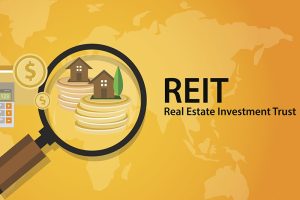
Imagine being able to maximize your returns and minimize risks in property investment by utilizing the right strategy.
This comprehensive guide will explore various property investment strategies, helping you achieve investment objectives and financial independence.
Get ready to unlock the power of investment strategy property in 2023!
Short Summary
- Understanding different property investment strategies is essential to achieving financial objectives.
- Investing in commercial properties and leveraging tax benefits can maximize returns while assessing market trends and understanding risks are key considerations.
- 2024 appears to be a promising time for investing in real estate due to projected price growth and declining mortgage rates.
Understanding Different Property Investment Strategies
 Having a property investment strategy is essential to attain investment objectives and realize financial independence. A popular investment strategy is crucial for success in the property market. Ensuring that the strategy is aligned with both present and future financial objectives is integral to selecting an appropriate property investment strategy. Establishing goals is essential for selecting a strategy that is compatible with your financial objectives and risk appetite.
Having a property investment strategy is essential to attain investment objectives and realize financial independence. A popular investment strategy is crucial for success in the property market. Ensuring that the strategy is aligned with both present and future financial objectives is integral to selecting an appropriate property investment strategy. Establishing goals is essential for selecting a strategy that is compatible with your financial objectives and risk appetite.
Some of the most prevalent property investment strategies include buying and holding, capital growth, cash flow, diversification, and other elements. These strategies may involve purchasing properties at a discount, forming partnerships in property investment, or even fractional investing in property investment. By understanding the various strategies available, you can make informed decisions that align with your financial goals and risk tolerance.
Capital Growth vs. Cash Flow
 Capital growth and cash flow are two different investment strategies to consider when venturing into the property market. Capital growth focuses on long-term growth of the property, while cash flow is centered around immediate rental income. Investing in capital growth properties can provide more consistent, long-term profits and the potential for higher capital growth. However, the drawbacks of capital growth properties include the requirement of having the resources for periodic payments without a consistent income stream.
Capital growth and cash flow are two different investment strategies to consider when venturing into the property market. Capital growth focuses on long-term growth of the property, while cash flow is centered around immediate rental income. Investing in capital growth properties can provide more consistent, long-term profits and the potential for higher capital growth. However, the drawbacks of capital growth properties include the requirement of having the resources for periodic payments without a consistent income stream.
On the other hand, investing in cash flow properties offers numerous advantages, such as lower initial prices, reduced risks, and the potential to generate enough income to cover mortgage payments before profiting. The drawbacks of cash flow properties involve the necessity to pay tax bills on a more regular basis and the potential to incur losses on the investment should the market decline.
By weighing the pros and cons of these strategies, you can make an informed decision on the best approach for your financial situation.
Diversifying Your Property Investment Portfolio
 Diversifying your property investment portfolio is essential to mitigate risks and maximize returns. By investing in various types of properties, such as vacant land, dual occupancy, duplexes, and second dwellings, you create a well-rounded investment portfolio that can withstand market fluctuations and capitalize on growth opportunities.
Diversifying your property investment portfolio is essential to mitigate risks and maximize returns. By investing in various types of properties, such as vacant land, dual occupancy, duplexes, and second dwellings, you create a well-rounded investment portfolio that can withstand market fluctuations and capitalize on growth opportunities.
When considering diversification, it’s important to review factors such as zoning, town planning, and development approvals for vacant land investments. For dual occupancy and duplex investments, be sure to check the council’s registrations to ensure all requirements are met.
By having a diverse property investment portfolio, you can reduce risks and optimize returns, setting the stage for long-term success in property investing.
Investing in Commercial Properties
 CCommercial real estate refers to any property utilized for business purposes, including office spaces, retail shops, and industrial units. Investing in commercial properties offers potential rental yields that tend to be higher than those of residential properties in the vicinity, and the tenants of commercial properties usually cover the majority of the recurring costs (maintenance, council rates, etc.).
CCommercial real estate refers to any property utilized for business purposes, including office spaces, retail shops, and industrial units. Investing in commercial properties offers potential rental yields that tend to be higher than those of residential properties in the vicinity, and the tenants of commercial properties usually cover the majority of the recurring costs (maintenance, council rates, etc.).
However, purchasing commercial real estate generally requires a larger deposit (approximately 30%). This can be a significant financial commitment, so it’s important to weigh the potential benefits against the challenges associated with commercial property investments.
By understanding the intricacies of commercial real estate investing, you can make informed decisions that align with your property investment goals.
Off the Plan Strategy
Purchasing an investment property off-the-plan means buying a property before it has been constructed. It’s often seen as a way to take advantage of potential capital growth. Off the plan purchases involve buying a property prior to its completion, which could take up to two years. While it’s possible to generate a return on investment when buying off-the-plan, many investors have discovered that the value of the finished property is lower than the contract price, and some investors have experienced a delay in realizing capital or rental growth.
The risks associated with off the plan purchases include the potential that the market may not increase as predicted by the developer, which may lead to negative equity or difficulty in obtaining financing. However, off the plan purchases can provide investors with the opportunity for capital growth and rental income.
It’s crucial to carefully consider these risks and rewards before committing to an off the plan property investment strategy.
New Purchase Strategy
In the new purchase strategy, we evaluate the potential advantages of acquiring new properties, including potential tax benefits and minimal renovations, in comparison to older purchase properties. The advantage of purchasing a new property is minimal renovation requirements and ease of finding renters or buyers. On the other hand, the cost of acquisition is comparatively lower for older properties, and there is the potential for immediate positive cash flow.
Other strategies such as the BRRRR deal, live-in-then-rent strategy, house hacking, and wholesaling are also available for purchasing properties. By understanding the pros and cons of new and old properties, you can make informed decisions on which property type best suits your investment strategy and financial goals.
Property Flipping Investment Strategy
Property flipping is a popular investment strategy that involves purchasing a property, making renovations, and then selling it for a profit in a short period of time. The flipping strategy entails purchasing a dilapidated property and restoring it with the intention of selling it for gain. However, capital gains taxes may be higher due to the quick sale of the property, and budgets and time frames may be impacted if the property is determined to require more than cosmetic enhancements.
Property flipping is most suitable for experienced investors who are aiming to rapidly expand their portfolio. Recognizing the types of improvements that will yield the highest return on investment is key to achieving success in house flipping. It’s suggested to double the renovation expenditure, aiming for an approximate ratio of $2 for every $1 spent on aesthetic enhancements. By understanding the risks and rewards of property flipping, you can make informed decisions on whether this strategy aligns with your investment goals.
Apartment vs House Strategy
When investing in property, it’s essential to consider the pros and cons of investing in apartments versus houses. Investing in apartments may provide lower purchase prices with the potential for higher returns due to higher rental prices in desirable locations and with desirable amenities. Conversely, houses have been known to appreciate steadily in value and are considered a reliable long-term investment.
However, when renovating an older apartment unit, restrictions set by the building owners and Body Corporates may present certain challenges. By comparing the advantages and disadvantages of investing in apartments and houses, you can make an informed decision on which property type best suits your investment strategy and goals.
Buy and Hold Strategy
The Buy and Hold Strategy involves purchasing a property, preferably below market value, and renting it out for a long-term period to cover the mortgage and other associated costs. Equity is built over time, and the property may be sold for a profit when its value has increased. The essential element of the buy-and-hold property investment strategy is to select an investment-grade property in an area with potential for capital appreciation and maintain it over an extended period.
A review should be conducted in the event of a market correction, when a new member is added, or when a member begins a pension. By understanding the benefits of the buy-and-hold strategy, you can make informed decisions on whether this long-term investment approach aligns with your financial goals and risk tolerance.
Buy, renovate, and Hold
The ‘renovate and hold’ property investment strategy involves purchasing a property, undertaking renovations to increase rental income, and maintaining ownership for long-term capital growth. A strategically-planned renovation can add considerable value to the property, as well as the potential to raise the rent afterward. This, in turn, could generate more equity which could be used to invest in another property, thus initiating a property investment portfolio.
It is important to be mindful of not prioritizing rental yields over capital growth, as a property with high growth potential will yield higher cash returns in the long run. By understanding the potential benefits and challenges of the renovate and hold strategy, you can make informed decisions on whether this approach aligns with your investment goals and financial objectives
Buy, subdivide, and sell
The buy, subdivide, and sell strategy involves acquiring a property, breaking it into smaller lots, and then selling those lots for a profit. This approach is successful in areas that have a lack of land and a higher population density. It necessitates locating a suitable property to subdivide and selecting properties in the ideal location. By subdividing the property, one can maximize its value and generate a higher return on investment.
The disadvantage of the subdivision property investment strategy is that it is a long-term strategy due to the amount of time required for completion. Consequently, fluctuations in the market may make it difficult to sell either, or both, pieces of land. However, the value of the land is likely to appreciate after it has been subdivided, providing a range of opportunities for utilization of the plots.
By understanding the risks and rewards of the buy, subdivide, and sell strategy, you can make informed decisions on whether this approach aligns with your investment goals and financial objectives.
City or Rural Strategy
Investing in city or rural properties has its own set of advantages and disadvantages. City properties are typically situated in urban areas and are more densely populated than rural properties, offering higher property values, higher rental yields, and more amenities. On the other hand, rural properties are usually located in more isolated areas and have lower property values, lower rental yields, and fewer amenities.
Location can have a considerable influence on investment returns. Generally, properties situated in more populous areas tend to yield higher rental returns and present more chances for capital growth. Conversely, properties located in more isolated areas tend to generate lower rental returns and offer fewer possibilities for capital growth.
By understanding the differences between investing in urban and rural properties, you can make informed decisions on which location best suits your investment strategy and goals
CBD or Suburb Strategy
Investing in central business district (CBD) properties offers the potential for increased capital growth, access to amenities and transportation, as well as the potential for higher rental yields. However, property prices are higher, the cost of living is higher, and land availability is limited in CBDs.
On the flip side, investing in suburban properties offers more affordable property prices, a family-friendly environment, and the potential for steady rental income. Suburban investments may have a lower potential for capital growth, limited access to amenities, and reliance on private transportation.
By comparing the potential benefits and drawbacks of investing in CBD properties versus suburban properties, you can make an informed decision on which location best suits your investment strategy and goals.
Utilizing Real Estate Investment Trusts (REITs)
 Real Estate Investment Trusts (REITs) are corporations or trusts that utilize investors’ capital to acquire and manage income-generating properties. REITs are traded on major exchanges like any other stock and can provide portfolio exposure to real estate without the need for a traditional real estate transaction. Investing in a REIT can be considered a dividend-paying stock, meaning that a portion of the company’s profits are regularly distributed to investors.
Real Estate Investment Trusts (REITs) are corporations or trusts that utilize investors’ capital to acquire and manage income-generating properties. REITs are traded on major exchanges like any other stock and can provide portfolio exposure to real estate without the need for a traditional real estate transaction. Investing in a REIT can be considered a dividend-paying stock, meaning that a portion of the company’s profits are regularly distributed to investors.
However, the value of shares in a REIT is subject to the fluctuations of the property market. Investors are not engaging in the traditional physical real estate market when investing in REITs. By understanding the benefits and drawbacks of investing in REITs, you can make informed decisions on whether this investment option is right for your financial goals and risk tolerance
Renovations and Developments: Adding Value to Your Investments
Renovations and developments can be a beneficial approach to amplify the value of your investment properties and augment rental income. Enhancing rental income and property value are the potential advantages of renovating an investment property. However, renovations necessitate costly and time-consuming property development work, and property development strategies also carry higher risks.
While it’s crucial to understand the potential risks and difficulties associated with this strategy, a well-executed renovation or development can significantly increase the value of your property and boost rental income. By considering the potential benefits and challenges of renovations and developments, you can make informed decisions on whether this approach aligns with your investment goals and financial objectives.
Subdivision Strategy: Maximizing Land Value
Subdivision is the act of dividing a parcel of land into two separate plots of land, which can increase the value of the land and generate a higher return on investment. The subdivision property investment strategy involves purchasing a single piece of land and dividing it to produce two distinct parcels of land on separate titles.
However, the subdivision property investment strategy is a long-term strategy due to the amount of time required for completion. Fluctuations in the market may make it difficult to sell either, or both, pieces of land. By understanding the risks and rewards of the subdivision strategy, you can make informed decisions on whether this approach aligns with your investment goals and financial objectives.
Assessing Market Trends and Opportunities
Tracking market trends and recognizing opportunities are of great importance for investors to make sound property investment decisions. Investors can leverage past patterns to anticipate upcoming trends and apply these insights to their advantage when formulating their plans.
A review should be conducted in the event of a market correction, when a new member is added, or when a member begins a pension. Analyzing suburb sales data can reveal which postcodes are exhibiting high growth rates. By understanding market trends and identifying opportunities, you can make informed decisions on when and where to invest in real estate, maximizing your returns and minimizing risks.
Leveraging Tax Benefits and Incentives
Investing in property for tax-saving purposes can be achieved by taking advantage of the depreciation associated with newly built properties. Tax benefits can be leveraged in combination with other investment strategies for enhanced returns. Property investors may be able to take advantage of mortgage interest deductions, subject to certain restrictions, which may result in cost savings that can be reinvested into purchasing additional properties.
Property investors may also be eligible for capital gains tax exemptions, stamp duty concessions, and other tax incentives depending on their jurisdiction. By understanding the various tax benefits and incentives available to property investors, you can maximize your returns through strategic tax planning and make the most of your property investments.
Is it a good time to invest in 2024 in real estate?
The projected property price growth and declining mortgage rates suggest that 2024 could be a favorable time to invest in real estate. By evaluating the current state of the property market and considering various property investment strategies, you can make informed decisions on whether it’s the right time for you to invest in real estate and capitalize on market trends and opportunities.
With the right research and planning, you can make the most of the current market conditions and maximize your profits
Summary
In conclusion, understanding various property investment strategies, market trends, and tax benefits is crucial for maximizing returns and minimizing risks in your investment journey. By carefully considering the pros and cons of each strategy, monitoring market trends, and leveraging tax incentives, you can make informed decisions that align with your financial goals and risk tolerance. Embrace the power of investment strategy property in 2023 and set yourself on the path to financial independence and success.
Frequently Asked Questions

What is an example of a property investment strategy?
Buy, renovate, and hold is an example of a property investment strategy for investors looking to increase their returns without waiting for the market to grow.
This entails purchasing a property, making renovations as necessary, and then renting it out.
What is the 1% rule in property investing?
The 1% rule in property investing suggests that investors should buy properties with a purchase price plus repairs that generate a monthly rental income of at least 1% of the purchase price. This allows investors to secure mortgage payments lower than the amount of monthly rental income generated by the property.
The 1% rule is a great way to ensure that investors are able to generate a steady stream of income from their investments. It also helps to protect them from potential losses due to market fluctuations. By following this rule, investors can be sure that their investments will be successful.
What is a property investment strategist?
A property investment strategist is an expert guide to assist you with investing in property, ensuring a smooth process from start to finish. They are crucial to the successful purchase and ownership of real estate.
Property investment strategists can help you identify the best properties to invest in, provide advice on financing options, and help you navigate the legal and regulatory requirements of the purchase. They can also provide guidance on how to get started.
What is the most profitable property investment?
Fix-and-flops are considered to be the most profitable property investments, as they offer a high potential for return on investment.
They are a great way to make money in the real estate market, as they allow investors to purchase a property, make improvements, and then sell it for a profit.
The key to success with Fix-it.
What's the best investment strategy?
Choose a buy-and-hold strategy for the best investment results. Buy an investment and hold onto it for at least 3 to 5 years, without selling it if possible. This strategy allows you to benefit from the long-term growth of the investment, as well as any dividends or other income it may generate. It also helps to reduce the amount of waste.













